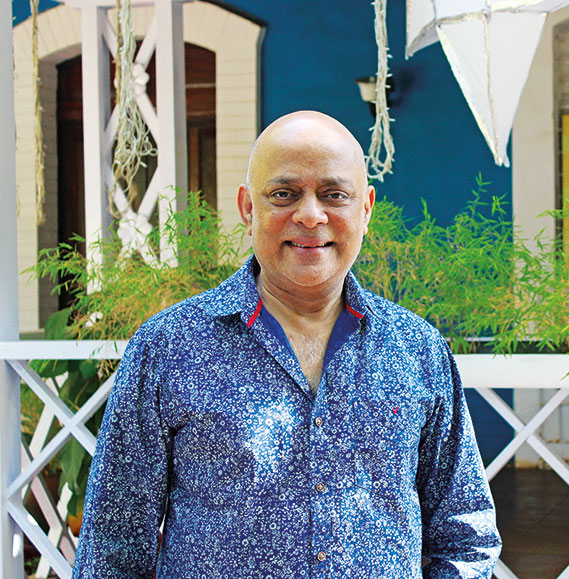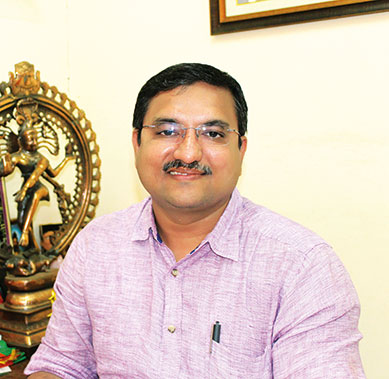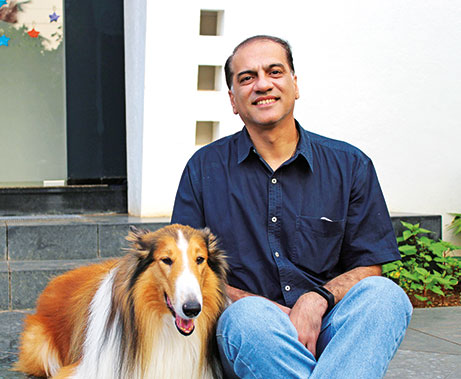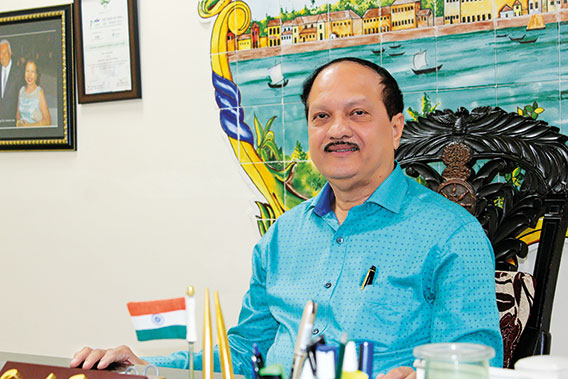
Residents say traffic movement in core areas is congested
Panaji has plans, but they don’t take off
Derek Almeida, Panaji
 Armando Gonsalves has seen Panaji grow and wither. He has been living in Campal, the heritage-preserved quarter of the city, since 1969 and is bitter about the direction Panaji has taken over the past three decades or so.
Armando Gonsalves has seen Panaji grow and wither. He has been living in Campal, the heritage-preserved quarter of the city, since 1969 and is bitter about the direction Panaji has taken over the past three decades or so.
“There are some positives but many disappointments as well. The number of senseless buildings coming up… traffic is in a complete mess. Governments in power are not doing their job and the No Mo Zo (No Motor Zone) idea, which was great, was never taken forward,” he laments.
On 13 May, 2012, Gonsalves launched a campaign to rehabilitate the St Inez Creek which runs through the city and is today a repository for untreated sewage and garbage. “Cleaning the creek is not difficult. There are engineering defects of the worst kind there which need to be corrected, but the government does not want to do it,” he says.
Gonsalves’s disappointments are shared by many who have seen the city go from bad to worse. Panaji was originally a ward of Taleigao village and its sole landmark was the castle of Adil Shah, constructed on the bank of the Mandovi river. Although historical accounts of Panaji date back to Kadamba King Shasthadeva (1007-50), its modernisation started in 1826 when D. Manuel de Portugal e Castro embarked on the difficult task of converting partly swampy, partly sandy stretches into the new capital of Goa.
The city’s grid road system with broad footpaths was laid down by the Portuguese, but haphazard growth has created an imbalance between carriageway and vehicles. According to the Revised City Development Plan for Panaji, 2041, about 1.06 lakh vehicles enter the city every day. Parking facilities are insufficient to tackle this influx.
Urban and Regional Development Plans Formulation and Implementation Guidelines stipulate that about 14 to 15 percent of the total city area has to be covered by roads. In Panaji, total road coverage is just 5.45 percent. Consequently, traffic movement in the core areas of the city is congested. Besides, increased use of private vehicles has led to haphazard street parking and reduction of road width.
The plan document notes that “one of the biggest issues in Panaji is the inadequacy of public transport which accounts for a meagre 15 percent of the total trips in the city. Public transport routes are not comprehensive and do not cover all areas of the city.”
Panaji got its first multi-level parking facility with a capacity of 465 cars in November 2016, but the `35-crore edifice, constructed at the entrance to the city, has remained under-utilised as there is no transport from the facility to the central business district.
There is no dearth of plans for the city’s growth. A comprehensive Rs 742-crore mobility plan, prepared by the Corporation of the City of Panaji under the Jawaharlal Nehru National Urban Renewal Mission (JNNURM) scheme, envisaged a public transport system and pedestrian precincts. It was submitted to the Union Ministry of Urban Development in 2013, but was never cleared.
After the Congress government was voted out in 2012, the new BJP government with Manohar Parrikar as chief minister commissioned Spain-based LKS to prepare a draft master plan for holistic development of the city. The plan, which laid emphasis on public transport with seven bus routes and a frequency of one bus every 12 minutes, never saw the light of day.
The Charles Correa Foundation, a non-profit, also prepared a comprehensive mobility plan, but lack of political will ensured that it was never implemented.
 The latest to join this long list of plans is the smart city and solar city concept floated by the Narendra Modi government. Sidharth Kunkalienkar, former MLA of the city and now Chief Minister Parrikar’s right-hand man, represents Panaji in the Assembly. He is virtually in charge of the city’s development.
The latest to join this long list of plans is the smart city and solar city concept floated by the Narendra Modi government. Sidharth Kunkalienkar, former MLA of the city and now Chief Minister Parrikar’s right-hand man, represents Panaji in the Assembly. He is virtually in charge of the city’s development.
“Under the smart city scheme, which also incorporates AMRUT (Atal Mission for Rejuvenation and Urban Transportation), we have taken up development of open spaces, gardens and a jogging and walking track along the Mandovi promenade. We have also taken up redevelopment of stairs which lead to the Altinho hill.”
There was a time when the city comprised Fontainhas (at present described as the Latin Quarter) and Altinho. Today, it has grown around the hill and spread towards the adjoining villages of Taleigao and St Cruz.
One development goal for the city is to make it septic tank-free by 2020. Most of its 17,807 households are connected to a sewerage system, but there are pockets in Campal, St Inez and Mala which are out of the system.
Under AMRUT, projects worth Rs 209 crore have been sanctioned of which 50 percent cost will have to be contributed by the government. Funds from this scheme are being used to refurbish gardens all around the city. “The thrust of the smart city scheme is to create better living conditions by upgrading sewage facilities, garbage collection and creating better power and water supply systems,” said Kunkalienkar who is also vice-chairman of the Goa State Infrastructure Development Corporation (GSIDC) which is implementing most of the projects.
The signature project for the city is probably the Integrated Command and Control Centre (ICCC) which will act as the nerve centre for safety, garbage collection and traffic control.
“This ambitious project will provide comprehensive CCTV coverage by linking police surveillance cameras as well as private CCTV feeds. We will also incorporate 112 emergency numbers, which the police will set up. We will link fire services and coordinate disaster management through the collectorate,” said Kunkalienkar.
In order to set up the ICCC, a special purpose vehicle called Imagine Panaji Smart City Development Ltd has been established with the Secretary of Urban Development as its chairman. By 2020, the city should have a refurbished power and water supply grid, 112 wi-fi points, smart metering for power and a fully upgraded sewerage system.
A fourth bridge across the Mandovi from Betim to Panaji is also on the planning board to relieve pressure on ferries. “One proposal is to build a pedestrian bridge and the second is for a bridge to accommodate two-wheelers. The option of a larger bridge to allow cars is also being contemplated. Another option is to get larger drive-in-drive-out ferries which can accommodate cars,” explained Kunkalienkar.
Vision and mission
According to the 2011 Census, Panaji has a population of 40,000. Around 5,800 persons enter the city every day and this figure is projected to increase to 12,300 by 2030. This will place enormous strain on infrastructure and make garbage collection and disposal more difficult. Although the CCP has a time-tested collection system, the city lacks a treatment plant.
Panaji produces about 70 tonnes of waste per day of which 42 percent is wet waste. About a decade ago, the CCP constructed about 100 units to treat wet waste locally. This system, which was the toast of the city, fell into disuse after the construction of a modern treatment plant at Saligao. At present, the city has three units with a combined capacity of 17 tonnes per day, which is clearly not enough.
Even as work under the smart city plan gets underway, on the surface it is the angst of having to put up with unruly traffic, unplanned development, shortage of parking and inability of governments to clean and rejuvenate the St Inez Creek that has delayed Panaji’s journey to becoming a first world city.
 Said Rahul Deshpande, architect and member of the Charles Correa Foundation, “Sustainable long-term vision is what ails Panaji. And I say this in the context of it being the capital city of a very unique state. We are a state that is urbanised in a very modern way. There has been development in the past 25 years, but without thinking about where it would take the city. There has to be curated thought about Panaji which isn’t happening.”
Said Rahul Deshpande, architect and member of the Charles Correa Foundation, “Sustainable long-term vision is what ails Panaji. And I say this in the context of it being the capital city of a very unique state. We are a state that is urbanised in a very modern way. There has been development in the past 25 years, but without thinking about where it would take the city. There has to be curated thought about Panaji which isn’t happening.”
Elaborating on why a vision and plan are necessary, he said, “You need to develop the city on a string of elements and there has to be a 10-year growth trajectory. We are a small city, so why can’t we have the best public transport and make an example of it? The Charles Correa Foundation prepared a perfect plan for a hop-on-hop-off system. Why was it not implemented?”
Some years ago, the Foundation was also asked to create a shop signage policy by the CCP but the resulting plan was never implemented. Traffic issues, too, are contentious terrain. Despite emphasis on enhancing public transport by planners, the government is hoping that an increase in parking space will resolve the problem.
“The whole plan is to pedestrianise city roads, but without offering alternative parking space this plan cannot be implemented,” explained Kunkalienkar. “We are trying to create parking lots in the city and three spots have been identified. We are also trying to introduce a public bicycle sharing system with 60 stations. The aim is to have a parking lot within 200 metres of each one’s destination.”
However, both Deshpande and Gonsalves are not convinced that this is the ideal solution. Deshpande says, “First, have we recognised that traffic is a problem? Second, have you set up a taskforce to create an action plan? It is not in the public or political discourse at all. All that every city is talking about is constructing multi-level parking lots. But that is not a solution.”
Gonsalves adds, “The government should encourage pedestrianisation of roads to reduce the number of private vehicles. In the central business district it should cost Rs 50 to park a car so that people are deterred from using cars for short distances.”
He also supports the re-energising of the Latin quarter of the city in Mala-Fontainhas with its quaint pathways and 18th-century houses. In his book, The Age of Kali: Indian Travels and Encounters, William Dalrymple referred to this area as “a chunk of Portugal washed up on the shores of the Indian Ocean”.
“You must get the vibe out of the Latin Quarter instead of casinos which bring a set of tourists that Goa does not want or need,” asserted Gonsalves.
Municipal logjam
 Despite cornering grants from the centre under the smart city scheme, a question mark hangs over the city’s development as the Panaji Corporation and the government are not on the same page. “I and my corporators are not aware of development works going on in the city. It was year before last that the then mayor, Shubam Chodankar, in a corporation meeting gave a blanket NOC to GSIDC to carry out development work in the city. So far no plans have been presented to the Corporation, which remains in the dark because no elected member is on the smart city board. The commissioner is on the board but being a bureaucrat he is not in a position to put forth any objection,” said Mayor Surendra Furtado.
Despite cornering grants from the centre under the smart city scheme, a question mark hangs over the city’s development as the Panaji Corporation and the government are not on the same page. “I and my corporators are not aware of development works going on in the city. It was year before last that the then mayor, Shubam Chodankar, in a corporation meeting gave a blanket NOC to GSIDC to carry out development work in the city. So far no plans have been presented to the Corporation, which remains in the dark because no elected member is on the smart city board. The commissioner is on the board but being a bureaucrat he is not in a position to put forth any objection,” said Mayor Surendra Furtado.
During his tenure as mayor and when the UPA government was in power at the centre, Furtado was instrumental in getting Rs 20 crore sanctioned for rejuvenation of St Inez Creek. “For 60 years every MLA who contested the Panaji Assembly seat gave top priority to cleaning the creek, but nothing happened. As mayor, when the Congress was at the centre, Rs 20 crore was sanctioned to the CCP. The money came but under political pressure the work was not tendered and the money went back.”
Speaking on a plan for upgrading public transport, Furtado said, “The centre had sanctioned Rs 800 crore for a comprehensive mobility plan for which a DPR was done by a Bengaluru-based consultant. We were supposed to have 80 world-class buses for the outer and inner rings. Unfortunately, the government changed at the centre and the plan fell through.”
The mayor was also critical of the funding pattern for the present phase of development. Under the JNNURM, the centre contributed 80 percent while the state government was expected to cough up the remaining 20 percent. The funding pattern under the smart city scheme is 50-50. “Now, you tell me which scheme was better,” said Furtado, “and the irony of it all was that when Narendra Modi was chief minister of Gujarat he took maximum benefit of the JNNURM scheme whereas we did not.”
Furtado also lamented that, of the Rs 72 crore sanctioned by the centre for building a 24x7 water supply system only Rs 17 crore was utilised and the remainder was sent back.
Doubtless, Panaji’s growth has remained stunted because the CCP has very little say in what happens in the city and no powers to make changes on the ground. Even traffic management is vested in the traffic department, leaving the CCP with no role to play. As long as the 74th Amendment to the Constitution, empowering urban local bodies, is not implemented in letter and spirit, the city will struggle to reinvent itself.



